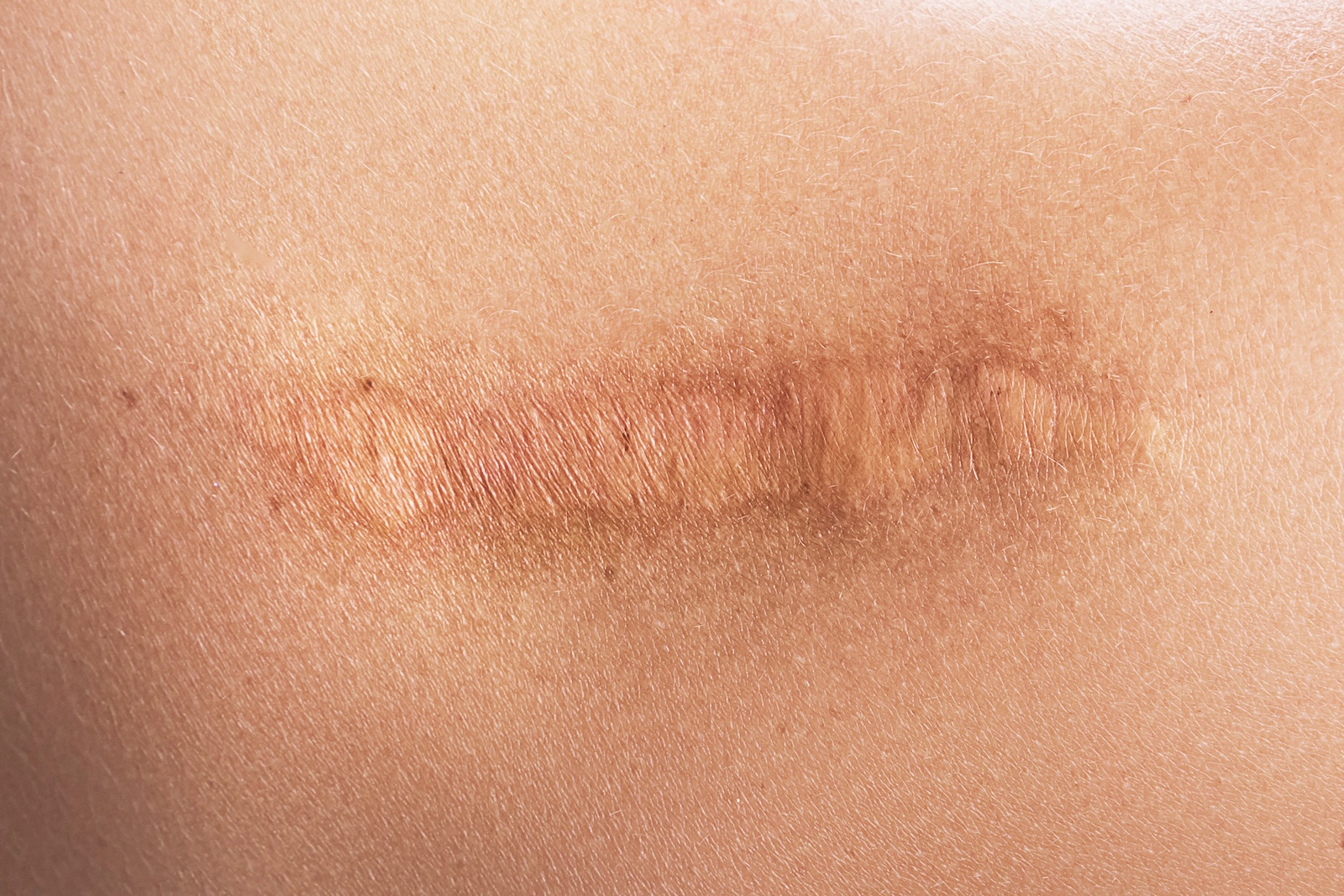
Anterior cervical discectomy and fusion (ACDF) is a commonly performed neck surgery that relieves pressure on the spinal cord or nerves by removing a damaged disc. Like any surgery, ACDF leaves a scar, and we understand that this can be a natural concern for patients when considering the procedure. However, with proper care, that scar can become a minor footnote in your recovery. If you’re a candidate for ACDF or ADR, here’s what you can expect from the scar, how to care for it, and how to reduce its appearance over time, starting with good post-operative habits.
What to Expect After ACDF Surgery
The Incision Location and Appearance
During ACDF surgery, the surgeon makes a small incision at the front of the neck to access the cervical spine. Depending on the number of levels being treated, the incision may range from one to three inches. The scar typically sits along a natural skin crease, which helps it blend in over time. Immediately after surgery, the area may appear red, raised, or slightly swollen, which is a normal part of the healing process.
Typical Healing Timeline
In most cases, the incision closes within 10 to 14 days. Over the following weeks, the scar will flatten and fade, although redness or slight discoloration may persist for several months. Full scar maturation may take up to a year. Everyone heals differently, and factors such as genetics, skin type, and post-operative care can influence the appearance of your scar in the long term.
How to Care for Your Scar During Recovery
First Few Days: Keeping the Area Clean and Dry
In the immediate post-operative period, it’s critical to keep the incision clean and protected. Follow your surgeon’s instructions carefully. In general, avoid touching the area unnecessarily and refrain from applying any creams, ointments, or topical treatments unless advised to do so by your care team.
When to Remove Bandages and Shower
Your surgeon will let you know when it is safe to remove any surgical dressings, typically within 24 to 72 hours, depending on the closure technique and whether you received external sutures. Once cleared to shower, let warm water run over the area, but avoid scrubbing. Gently pat dry with a clean towel and avoid exposing the wound to standing water, such as in baths or pools.
Warning Signs of Infection
Watch for signs of infection, such as increased redness, swelling, warmth, or drainage at the incision site. A low-grade fever or increasing pain may also signal a problem. If you notice any of these symptoms, contact your surgeon immediately. Prompt care can prevent complications and support faster healing.
Long-Term Scar Management Tips
Silicone Gels and Scar Creams
After the incision has fully healed and your surgeon gives you the go-ahead, you may start using topical treatments to support the healing process. Silicone gel sheets or silicone-based scar creams have been shown to reduce redness and flatten hypertrophic scars. These products create a protective barrier over the skin and help retain moisture, which supports collagen remodeling.
Massage Techniques to Improve Healing
Once healing is underway, gentle scar massage can help break down dense tissue and improve skin mobility. Using circular motions with clean hands or as directed by your care team, apply light pressure for a few minutes a day to improve circulation and help reduce itchiness or tightness around the scar.
Sun Protection and Scar Fading
Scars are susceptible to ultraviolet (UV) light. Sun exposure can darken the scar and make it more noticeable, especially in the first year. Using high-SPF sunscreen or wearing a scarf or high-collared shirt when outside are some of the most effective ways to help your scar fade.
What ACDF Scars Look Like Over Time
Before-and-After Expectations
While every patient’s healing journey is unique, most ACDF scars become significantly less visible over time. What begins as a pink or red line often fades to a pale, thin mark. For many patients, the scar becomes virtually unnoticeable, particularly when placed along a natural neck crease.
Factors That Influence Scar Appearance
Several factors can influence the healing process of your scar. These include:
- Skin tone and thickness
- Genetic predisposition to scarring or keloids
- Number of surgical levels treated
- Surgical technique and incision location
- Adherence to post-op care and sun protection
Patients who smoke or have certain medical conditions (such as diabetes) may experience slower healing or more prominent scarring.
When to Talk to Your Surgeon
Concerns About Scar Tissue or Keloids
If your scar feels raised, hard, or itchy long after the initial healing phase, or if you have a known history of keloid formation, speak with your surgeon. While most ACDF scars remain flat and minimal, some patients may develop excess scar tissue. Early intervention with topical treatments or corticosteroid injections can help manage this.
Cosmetic Scar Revision Options
In rare cases where a scar remains prominent or causes cosmetic concerns, revision surgery or laser treatments may be considered. These options are typically reserved for patients who are fully healed and have had their scars mature for at least 12 months. Your surgeon can help determine whether further treatment is appropriate.
Expert Insights from ADR Spine
At ADR Spine, scar care is part of the full continuum of treatment. Dr. Todd H. Lanman, globally recognized spinal neurosurgeon and founder of the Advanced Disc Replacement Spinal Restoration Center, brings a comprehensive, patient-centered approach to every case. This philosophy is shared by the experienced surgeons in his Top Doctors in ADR & Arthroplasty Program. From your initial consultation to your post-surgical scar care, your team will be dedicated to your healing every step of the way.
Ready to reclaim your life? Get in touch with Dr. Lanman Today.
FOLLOW US ON SOCIAL MEDIA | @ADRSPINE




